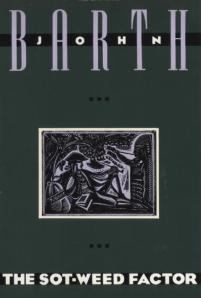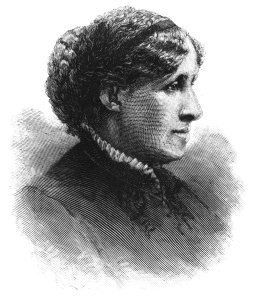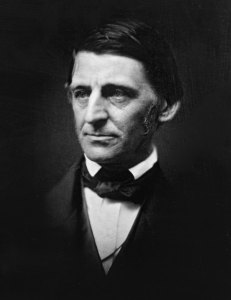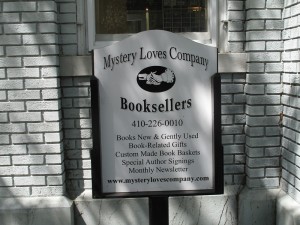Ballet at (the new and improved) Lincoln Center, where even the fountain dances!
Recently, I traveled to New York to see ballet at Lincoln Center: The American Ballet Theatre in the Opera House on Friday night; New York City Ballet at the David H. Koch Theater on Saturday. In both cases, I was going with dear friends of long standing, who love dance as much as I do. What I didn’t realize was that for the past three years, Lincoln Center has been in the throes of a major redesign project.
I arrived – June 10 – as work on the project was entering its final phase. My friend Lynn, for whom the city is a second home, was the ideal tour guide. To begin with: a new sign:

Henry Moore's sculpture Reclining Figure now floats above a refelcting pool at the Center's North Plaza

Festive poster display in front of the Opera House
 The fountain at the center of the Main Plaza has become a whimsical, even playful accompaniment to the Lincoln Center experience. Not everyone was initially happy with this innovation. But Saturday night, just prior to the eight o’clock curtain at both the Opera House and the Koch Theater, the waterworks suddenly got high and wild. People were exclaiming in wonder; some got wet; everyone seemed delighted by the show.
The fountain at the center of the Main Plaza has become a whimsical, even playful accompaniment to the Lincoln Center experience. Not everyone was initially happy with this innovation. But Saturday night, just prior to the eight o’clock curtain at both the Opera House and the Koch Theater, the waterworks suddenly got high and wild. People were exclaiming in wonder; some got wet; everyone seemed delighted by the show.
This video will give you some sense of what the scene was like, although in this instance, we really do have a classic case of You Had To Be There:
********************************************
Here’s another shot of the reflecting pool at the North Plaza: . I took this picture to make a point; namely, that virtually every new feature currently to be seen at Lincoln Center is named for a major donor. The fountain, for another instance, is more properly termed the Revson Fountain, for Charles Revson, founder of Revlon Cosmetics. But the example I got the biggest kick out of was “the Roslyn and Elliot Jaffe Family Drive.” This is basically an underpass directly in front of the complex, allowing a noxious and perilous street to go underground.
. I took this picture to make a point; namely, that virtually every new feature currently to be seen at Lincoln Center is named for a major donor. The fountain, for another instance, is more properly termed the Revson Fountain, for Charles Revson, founder of Revlon Cosmetics. But the example I got the biggest kick out of was “the Roslyn and Elliot Jaffe Family Drive.” This is basically an underpass directly in front of the complex, allowing a noxious and perilous street to go underground.
Although these various enhancements were not without controversy, I found them for the most part quite wonderful – a material improvement of an already priceless resource. The Kennedy Center in Washington DC was supposed to undergo a similar makeover, but Congress declined to vote the necessary funds. I wonder if they’ve considered going the naming rights route? It’s obviously worked wonders for Lincoln Center. (As I sit here, I’m trying out “the Ron and Roberta Rood Underpass.” Not sure how that sounds, never mind where the money would come from!)
Well, enough of this – what of the ballet? Ah, the ballet…
Here’s the banner proudly displayed on the opera house facade:
Lynn and I saw three one act ballets performed by this venerable company. First on the program was Brahms-Haydn Variations, choreographed by Twyla Tharp. what a splendid work! In his review in the New York Times, Alastair Macaulay could not heap enough praise on Tharp and on this ballet:
“Brahms-Haydn” changes mood alchemically from one variation to the next, builds cumulatively to its finale and develops variations on those original two lifts and other early movement in ways that look inevitable. In one variation, a woman takes that jumping lift right over a man’s back. When she arrives, she wheels her raised leg around until it almost hits him; then she wheels it back again. Ms. Tharp makes this look like an experiment in action (is this going to work?) as no ballet choreographer ever did before. With such strokes she has enlarged the nature of spontaneity in choreography.
The next ballet was “On the Dnieper,” with music by Sergei Prokofiev and choreography by Alexei Ratmansky. I was especially delighted to be seeing this,, because I love the music of Prokofiev, and I was keen to see something of the work of Ratmansky, formerly of the Bolshoi and now artist in residence at the ABT.
“On the Dnieper” is a tale of love and heartbreak. It was beautifully done.
Finally: Fancy Free. I realized that I had actually never seen this storied collaboration between Leonard Bernstein and Jerome Robbins. Or at least I hadn’t seen it all the way through. All I can say about this justly famous work is: to see it is to love it:
Fancy Free debuted in 1944. In 1957, Jerome Robbins and Leonard Bernstein collaborated again, this time on an musical destined for Broadway. Into this ambitious project they drew a young lyricist and compose unknown at that time to theater audiences. His name was Stephen Sondheim. The show was West Side Story. At the tender age of thirteen, I had the enormous privilege of seeing it with the original cast, shortly after its sensational opening.
******************************************************
The New York City Ballet’s Saturday night program was equally memorable. Again, we saw three one act ballets. The first was “After the Rain,” choreographed by Christopher Wheeldon to the music of Estonian composer Arvo Part. This ballet has two sections; the second half, danced by Wendy Whelan and Craig Hall, was riveting. I had seen my first Wheeldon ballet this past January: Liturgy, also with Wendy Whelan. These dances are like nothing I have ever seen before, and Wendy Whelan – age 43! – is simply amazing. In “Terrestrial Wanderings in a Place Rich With Atmosphere,” New York Times critic Gia Kourlas said: “Wendy Whelan seemed to float in [Craig Hall’s] arms like gosssamer; they should always dance together.”
The second ballet was “Luce Nascosta” or “Unseen Light.” The choreographer was Mario Bigonzetti; the score, by Bruno Moretti, was commissioned by City Ballet. While parts of this dance were fascinating, as a whole I did not think it was entirely successful. For one thing, it was too long; for another, the dancers’ movements were sometimes jerky and hieratic in a way that I found unlovely. The stage was in darkness much of the time.
All the more reason to cheer for the third and final number on the program: “Who Cares,” a delicious confection set to music by George Gershwin and choreographed by George Balanchine:
*****************************************
I recently came across this rather spectacular promotional video for the Dutch National Ballet’s 2010-2011 season. I wonder of this company tours at all? If not, I may have to pop over to the Netherlands to see them:
How I met Emily Dickinson
 It happened at the Concord Colonial Inn in Concord, Massachusetts, some twenty years ago. My husband and I were having dinner. Emily Dickinson was wafting hither and thither through the dining room, clutching a shawl close against the cold. She was available, she informed us, for the purpose of reciting her poems.
It happened at the Concord Colonial Inn in Concord, Massachusetts, some twenty years ago. My husband and I were having dinner. Emily Dickinson was wafting hither and thither through the dining room, clutching a shawl close against the cold. She was available, she informed us, for the purpose of reciting her poems.
Any requests?
My first thought: “Because I could not stop for death, / He kindly stopped for me.”
Second thought: “After great pain, a formal feeling comes– / The nerves sit ceremonious like tombs;”
Well, this just won’t do, said I to myself. Here we are, in this lovely old (supposedly haunted) hotel, partaking of this delicious New England repast. There may have been a fire going in the fireplace. At any rate, I felt the need to elicit from Miss Dickinson a lyric rather less doom laden than the above. I said to her tentatively, “Isn’t there something about a ‘little tippler’…?”
There certainly was, and she forthwith launched into her recitation:
I taste a liquor never brewed,
From tankards scooped in pearl;
Not all the vats upon the Rhine
Yield such an alcohol!Inebriate of air am I,
And debauchee of dew,
Reeling, through endless summer days,
From inns of molten blue.When landlords turn the drunken bee
Out of the foxglove’s door,
When butterflies renounce their drams,
I shall but drink the more!Till seraphs swing their snowy hats,
And saints to windows run,
To see the little tippler
Leaning against the sun!
I have visited Concord several times, and have waxed lyrical about that gem of a town in this space. Emily Dickinson, however, did not live in Concord but rather in Amherst, to the west. Her life was intimately bound up with the college, with Amherst Academy, where she received her secondary school education, and with the newly founded Mount Holyoke College in nearby South Hadley, which she also attended. I’m getting all this from a new biography of the poet by Lyndall Gordon. I first heard of this book some months ago and was at once struck by its title, which, considering the subject, seemed bizarre:  . A book about Emily Dickinson entitled Lives Like Loaded Guns? what was that about? The subtitle pretty much explains it: “Emily Dickinson and Her Family’s Feuds.” It is Gordon’s contention that those feuds – one of them about a scandalous love affair – shaped the manner in which the poet’s legacy has come down to us. As for the title itself, it originates in this poem:
. A book about Emily Dickinson entitled Lives Like Loaded Guns? what was that about? The subtitle pretty much explains it: “Emily Dickinson and Her Family’s Feuds.” It is Gordon’s contention that those feuds – one of them about a scandalous love affair – shaped the manner in which the poet’s legacy has come down to us. As for the title itself, it originates in this poem:
My Life had stood – a Loaded Gun –
In Corners – till a Day
The Owner passed – identified –
And carried Me away -And now We roam in Sovereign Woods –
And now We hunt the Doe –
And every time I speak for Him –
The Mountains straight reply –And do I smile, such cordial light
Upon the Valley glow –
It is as a Vesuvian face
Had let its pleasure through –And when at Night – Our good Day done –
I guard My Master’s Head –
‘Tis better than the Eider-Duck’s
Deep Pillow – to have shared –To foe of His – I’m deadly foe –
None stir the second time –
On whom I lay a Yellow Eye –
Or an emphatic Thumb –Though I than He – may longer live
He longer must – than I –
For I have but the power to kill,
Without–the power to die–
I don’t completely understand these lines, but I feel their power nonetheless – especially where the final two lines are concerned. As for the book, it weighs in at slightly over 400 pages (not counting notes & etc.), and at present I’m only fifty-six pages in. It is a slow but very compelling read.
As for the Emily Dickinson I encountered at the Concord Inn, she was, of course, an actress playing the part. But she was convincing, and she knew much of the canon by heart. And as for her presence there in Concord, the town has so many distinguished ghosts, it didn’t seem all that odd to see her there.
As for the Dickinson poem that, for me, is the pure distillation of her genius, it is this one, which I alluded to above:
After great pain a formal feeling comes–
The nerves sit ceremonious like tombs;
The stiff Heart questions–was it He that bore?
And yesterday–or centuries before?The feet, mechanical, go round
A wooden way
Of ground, or air, or ought,
Regardless grown,
A quartz contentment, like a stone.This is the hour of lead
Remembered if outlived,
As freezing persons recollect the snow–
First chill, then stupor, then the letting go.
Paul Doiron hits the ground running with The Poacher’s Son
 Here is a mystery that centers on the eternally mysterious relationship between father and son. Mike Bowditch is a game warden; his patch is rural Maine, where he was born and grew up. He’s good at his job and loves it, but his personal life is uneasy. Much of the trouble stems from his relationship with his father. Jack Bowditch is a difficult man to like, much less love. He’s a brawler and a drinker who gets by as a poacher of illegal game. His performance as a parent has left much to be desired.
Here is a mystery that centers on the eternally mysterious relationship between father and son. Mike Bowditch is a game warden; his patch is rural Maine, where he was born and grew up. He’s good at his job and loves it, but his personal life is uneasy. Much of the trouble stems from his relationship with his father. Jack Bowditch is a difficult man to like, much less love. He’s a brawler and a drinker who gets by as a poacher of illegal game. His performance as a parent has left much to be desired.
But Mike refuses to give up on this wayward man. When Jack is accused of murder and goes on the lam, making a bad situation worse, his son springs to his defense. Things immediately go from bad to worse. Mike places the job he loves in jeopardy by mounting his own search for his father, in defiance of both police orders and those of his own commanding officer in the warden’s service. But he will not desist. His belief in his father’s innocence is firm and unshaken.
Many are the pleasures on offer in The Poacher’s Son. Mike Bowditch is beset by unresolved doubts and conflicting emotions; nevertheless, he’s an enormously appealing character, a young man still working to define himself and his life’s purpose. His struggle has been made more arduous by a difficult childhood, spent around adults who, for the most part, did not serve his needs well.
But respecting one thing Mike Bowditch feels no ambivalence: his feelings for his native state are fierce and uncompromising. He loves it for its wildness and its beauty, and it hurts him to see those qualities heedlessly endangered. When flying over the territory in a small plane, this is what he observes:
‘To the south I saw the muddy coils of the Segocket River and my own little tidal creek. I glimpsed the Square Deal Diner and the Sennebec Market. But what really struck me from above, was all the new development–whole neighborhoods being carved out of wooded hilltops, luxury houses sprouting up in lawns of mud. It was a domesticated landscape, growing even more so, and the thought of a few fugitive bears hiding out along the ridgetops and the remaining cedar hollows filled me with a melancholy ambivalence.
(Segocket, Sennebec – I love the sound of those place names.)
Lately I’ve been passing through a sort of Slough of Despond where crime fiction is concerned, abandoning one after another highly touted books that weren’t working for me and, more depressing still, books by favorite authors that were not holding my interest. (Most shockingly, this recently happened with Reginald Hill’s Midnight Fugue. Could it have been my mood? Still, my respect and liking for the author of the Dalziel and Pascoe series remains undimmed, and I plan to give Fugue a second try.) The Poacher’s Son pulled me right out of that slough, making me want to shout from the roof tops: What a terrific novel!
Paul Doiron – pronounced “Dwarren,” as he graciously informed me via e-mail – is the editor in chief of Down East: The Magazine of Maine. He is also a guide for fly fishing trips, although he informs us on his website that he is currently too busy to perform that particular function. One of the reasons his time is so taken up at present is that he is working on the next Mike Bowditch novel. Wonderful news – I plan to be first in line to get my copy.
In sum: great writing, fully rounded characters,a marvelous sense of place, a compelling plot that throws curves the reader’s way at unexpected junctures, The Poacher’s Son – a first novel, mirabile dictu! – is a work of outstanding quality.
Stieg Larsson
The appearance of The Girl Who Kicked the Hornet’s Nest, the third and final volume in Stieg Larsson’s massively popular Millennium Trilogy, has prompted a number of interesting reflections from critics and reviewers:
The Girl Who Conquered the World, by Laura Miller (Salon);
The Secrets of Stieg Larsson, by Malcolm Jones (Newsweek);
The Afterlife of Stieg Larsson, by Charles McGrath (New York Times Sunday Magazine).
Several commentators have taken a look at the phenomenon of Scandinavian crime fiction in general:
Very Cool Cases, by Neely Tucker (Washington Post);
A Scandinavian Hit Sets Publishers Seeking More, by Julie Bosman (New York Times).
Neely Tucker omits my personal favorite, Norway’s extremely gifted Karin Fossum. And neither article mentions the team of writers whom many consider the founding parents of Scandinavian crime fiction: Maj Sjowall and Per Wahloo. Together, these two penned ten novels between 1965 and 1975, before Wahloo’s untimely death. All ten books are currently in print, courtesy of Vintage Crime/Black Lizard. They are, each of them, eminently worth reading.
At any rate – thanks are due to all of these fine writers for infusing such vitality into the mystery genre.
Roberta recommends: an eclectic group
I hope to write more about the following titles when time permits. Meanwhile, here are some on-the-fly recommendations:
Nonfiction
 From the diary of midwife Martha Ballard, as well as other sources,, Laurel Thatcher Ulrich has brought to life a small community in Maine as it was during the late eighteenth and early nineteenth centuries. Why did I pick up this book at this time? My visit to the Smithsonian American Art Museum instilled in me a desire to know more about the history of this country. In particular, I wished to see it through the eyes of ordinary people. I should say, everyday people, because really, there is nothing ordinary about Martha Ballard, although she herself would probably have been amazed at the notion that she was in any way special. This luminous, revelatory work won the 1991 Pulitzer Prize for history.
From the diary of midwife Martha Ballard, as well as other sources,, Laurel Thatcher Ulrich has brought to life a small community in Maine as it was during the late eighteenth and early nineteenth centuries. Why did I pick up this book at this time? My visit to the Smithsonian American Art Museum instilled in me a desire to know more about the history of this country. In particular, I wished to see it through the eyes of ordinary people. I should say, everyday people, because really, there is nothing ordinary about Martha Ballard, although she herself would probably have been amazed at the notion that she was in any way special. This luminous, revelatory work won the 1991 Pulitzer Prize for history.
*****************
 Still feeling the same hunger for the story of this country, I tackled The Metaphysical Club. I say “tackled” because this was a challenging book. Menand’s meticulous examination of some rather abstruse concepts made my head spin. Nevertheless, I was largely fascinated by the stories he told. The narrative was anchored by the lives of four eminent Americans: Oliver Wendell Holmes Jr., William James, Charles Sanders Peirce, and John Dewey. I was enlightened, actually astonished, by Menand’s discourse on the abolitionist cause; and his explanation of how and why the principle of tenure was established in colleges and universities across the country. Oliver Wendell Holmes fought in the Civil War; Menand’s description of the Wilderness Battle is the most horrific passage about pitched battle that I have ever read. The Metaphysical Club was awarded the 2002 Pulitzer Prize for history.
Still feeling the same hunger for the story of this country, I tackled The Metaphysical Club. I say “tackled” because this was a challenging book. Menand’s meticulous examination of some rather abstruse concepts made my head spin. Nevertheless, I was largely fascinated by the stories he told. The narrative was anchored by the lives of four eminent Americans: Oliver Wendell Holmes Jr., William James, Charles Sanders Peirce, and John Dewey. I was enlightened, actually astonished, by Menand’s discourse on the abolitionist cause; and his explanation of how and why the principle of tenure was established in colleges and universities across the country. Oliver Wendell Holmes fought in the Civil War; Menand’s description of the Wilderness Battle is the most horrific passage about pitched battle that I have ever read. The Metaphysical Club was awarded the 2002 Pulitzer Prize for history.
************************
 I thoroughly enjoyed Contested Will. James Shapiro takes us on a tour of the entire Shakespeare authorship dispute, starting with Edmond Malone (1741-1812), moving on to the fascinating American eccentric Delia Bacon, to Mark Twain, and surprisingly, Helen Keller. Sigmund Freud, too, weighs in with his doubts. Shapiro gives us the history of the controversy, with special emphasis on claims made on behalf of Sir Francis Bacon and Edward DeVere, 17th Earl of Oxford (often referred to simply – and confusingly IMHO, as “Oxford”). It’s a lively and engaging narrative. Shapiro relates a story involving a play from 1759 entitled High Life Below Stairs. A character asks the question that forms the subtitle of Shapiro’s book: “Who wrote Shakespeare?” When she is told that Ben Johnson is the real author, she protests: “Oh no! Shakespeare was written by one Mr. Finis, for I saw his name at the end of the book.”
I thoroughly enjoyed Contested Will. James Shapiro takes us on a tour of the entire Shakespeare authorship dispute, starting with Edmond Malone (1741-1812), moving on to the fascinating American eccentric Delia Bacon, to Mark Twain, and surprisingly, Helen Keller. Sigmund Freud, too, weighs in with his doubts. Shapiro gives us the history of the controversy, with special emphasis on claims made on behalf of Sir Francis Bacon and Edward DeVere, 17th Earl of Oxford (often referred to simply – and confusingly IMHO, as “Oxford”). It’s a lively and engaging narrative. Shapiro relates a story involving a play from 1759 entitled High Life Below Stairs. A character asks the question that forms the subtitle of Shapiro’s book: “Who wrote Shakespeare?” When she is told that Ben Johnson is the real author, she protests: “Oh no! Shakespeare was written by one Mr. Finis, for I saw his name at the end of the book.”
In the book’s final section, Shapiro weighs in with his own views, and he makes a persuasive case indeed for the conclusion he himself has reached in the matter of “Who wrote Shakespeare.”
A review of Contested Will appeared earlier this month in the Washington Post.
Fiction
 Jane Gardam is an author who needs to be more widely known by those who appreciate wonderful writing (and who account themselves Anglophiles like myself). Gardam’s prose style is distinctive and quirky; her writing is seasoned with the wit and irony that many of us treasure in the British novelists. In a prior post, also entitled “Roberta recommends,” I briefly discussed Old Filth, the story of retired barrister Sir Edward Feathers. The Man in the Wooden Hat is a sort of companion volume. It returns once again to Feathers’s youth, but it is primarily the story of his wife Betty. Both Betty and Feathers suffered terrible losses as children.When they meet and fall in love in exotic Hong Kong, they nurture the hope that they can compensate for past suffering with the freshness of a new marriage. Destiny, of course, is rarely so predictable or accommodating to our wishes.
Jane Gardam is an author who needs to be more widely known by those who appreciate wonderful writing (and who account themselves Anglophiles like myself). Gardam’s prose style is distinctive and quirky; her writing is seasoned with the wit and irony that many of us treasure in the British novelists. In a prior post, also entitled “Roberta recommends,” I briefly discussed Old Filth, the story of retired barrister Sir Edward Feathers. The Man in the Wooden Hat is a sort of companion volume. It returns once again to Feathers’s youth, but it is primarily the story of his wife Betty. Both Betty and Feathers suffered terrible losses as children.When they meet and fall in love in exotic Hong Kong, they nurture the hope that they can compensate for past suffering with the freshness of a new marriage. Destiny, of course, is rarely so predictable or accommodating to our wishes.
The pleasures of Archaeology
 I don’t normally buy this magazine, even though like most people, I am fascinated by archaeological expeditions and discoveries. I bought this particular issue because of the photograph of the Tollund Man on the cover.
I don’t normally buy this magazine, even though like most people, I am fascinated by archaeological expeditions and discoveries. I bought this particular issue because of the photograph of the Tollund Man on the cover.
Many years ago, when I was teaching high school English, I used a text book that contained an excerpt from The Bog People: Iron-Age Man Preserved, by Danish archaeologist P.V. Glob. At the time, I was faced with the usual cohort of bored, antsy teenagers, and I don’t recall getting mush of a response from them when we discussed this piece. But I have never forgotten the effect it had on me.
The English translation of The Bog People appeared in this country in 1969.
 Gods, Graves, and Scholars, another landmark volume on archaeology by C.W. Ceram, was written in 1949. It was translated from the German and published here in 1951, A revised edition appeared in 1967. That was already some years after my mother had first urged me to read it.
Gods, Graves, and Scholars, another landmark volume on archaeology by C.W. Ceram, was written in 1949. It was translated from the German and published here in 1951, A revised edition appeared in 1967. That was already some years after my mother had first urged me to read it.
It is the second revised edition, dated 1979, that sits before me on my desk at this moment. Ceram states in his foreward to the first American edition: ‘My book was written without scholarly pretensions. My aim was to portray the dramatic qualities of archaeology, its human side.” He goes on to describe the fruits of his research:
‘Archaeology, I found, comprehended all manner of excitement and achievement. Adventure is coupled with bookish toil. Romantic excursions go hand in hand with scholarly self-discipline and moderation. Explanations among the ruins of the remote past have carried curious men all over the face of the earth.
Two stories made a lasting impression. The first was that of Heinrich Schliemann and the search for Troy. This particularanecdote has stayed with me:
‘Incredible as it may seem, this actually happened: the rich and eccentric foreigner one evening sat in the village square and read the Twenty-third Book of the Odyssey to the descendants of those who had been dead for three thousand years. Overcome by emotion, he wept, and the villagers wept with him.
The second is the discovery of the tomb of King Tutankhamen. The year is 1922. Archaeologist Howard Carter has enlarged a hole in the door to the newly unearthed burial chamber. Lord Carnarvon, his backer on the project, and others, are crowded around him:
‘Nervously Carter lit a match, touched it to the candle, and held it toward the hole. As his head neared the opening–he was literally trembling with expectation and curiosity–the warm air escaping from the chamber beyond the door made the candle flare up. For a moment Carter, his eye fixed to the hole and the candle burning within, could make out nothing. Then, as his eyes became gradually accustomed to the flickering light, he distinguished shapes, then their shadows, then the first colors. Not a sound escaped his lips; he was struck dumb. The others waited for what seemed to them like an eternity. Finally Carnarvon could no longer contain his impatience. “Can you see anything?” he inquired.
Carter, slowly turning his head, said shakily: “Yes, wonderful things.”
As with so many books that shaped my young mind (such as it was), it is probably time to revisit Gods, Graves, and Scholars. (It is thought that C.W. Ceram – real name Kurt Wilhelm Marek – wrote so eloquently of the distant past in an effort to escape from his own recent past. Read this and judge for yourself.)
*******************************
While working on a review of Peter Ackroyd’s novel The Fall of Troy, I discovered this fabulous photograph of Heinrich Schliemann’s wife Sophia wearing some of the jewels comprising what he called “Priam’s Treasure.”
*******************************
In The Bog People, this is how P.V. Glob describes the discovery, in 1950, of the body that came to be known as Tollund Man:
‘Momentarily, the sun burst in, bright and yet subdued, through a gate in blue thunder-clouds in the west, bringing everything mysteriously to life. The evening stillness was only broken, now and again, by the grating love-call of the snipe. The dead man, too, deep down in the umber-brown peat, seemed to have come alive. He lay on his damp bed as though asleep, resting on his side, the head inclined a little forward, arms and legs bent. His face wore a gentle expression–the eyes lightly closed, the lips softly pursed, as if in silent prayer. It was as though the dead man’s soul had for a moment returned from another world, through the gate in the western sky.
The men digging up peat to use as fuel thought they had found the victim of a recent murder. They called the police. The officers, knowing that similar mummified remains had been found in the area before, called the local museum. Thus did Tollund Man pass once again into history. (He is thought to have lived during the fourth century BC.)
The men cutting fuel for the coming winter were not entirely mistaken in their surmise about the body they had uncovered. Tollund man was found with a noose around his neck.
 The Bog People has been re-issued by New York Review Books, a publisher that’s doing a terrific job of bringing the classics, both fiction and nonfiction, back into print.
The Bog People has been re-issued by New York Review Books, a publisher that’s doing a terrific job of bringing the classics, both fiction and nonfiction, back into print.
A tale of two bookstores, with a digression concerning Maryland’s Eastern Shore
Recently I went to a Big Box bookstore, looking for two easy picture books. One was The Lion & the Mouse, Jerry Pinkney’s gorgeous Caldecott winner; the other was Yoko’s Paper Cranes by Rosemary Wells. I had seen them both at the library and simply had to have them for the forthcoming grandchild (Oh…Haven’t I mentioned…? She’s due in early October. There will be plenty of time then for kvelling – don’t think there’s a word for this in English – so for now, on with our story…)
Here are the books in question:
Admittedly, I have spent very little time in the area of this store devoted to children’s literature. Even so, I found it a confusing place. A surprisingly small space was allotted to what we in the library trade call easy picture books. They were primarily shelved spine out. Keep in mind, these books are very thin. I had trouble making out the names of the authors and illustrators. And while there was a bay labeled “Newbery Award Winners,” there was no analogous location for winners of the immensely prestigious Caldecott Medal – or none that I could see, at any rate.
I looked around for a staff person and saw none. I then went to the customer service desk – no one there. I roamed freely, looking for anything resembling a sales associate, and still came up empty handed. I had a paperback and a couple of magazines, so I decided to check out at that point. There was a line, this being Memorial Day and the store being fairly crowded. My turn finally came. Often when you check out at one of these stores, the sales clerk asks if you found everything you were looking for. This time, the clerk did not ask me that question.
He should have. I had my answer ready!
I returned home and ordered the books from Amazon. They’re on their way to me, even as I write this.
Meanwhile, two weeks ago, in the matter of bookstores, it was a different story entirely.
Mystery Loves Company is located in the exquisite small town of Oxford, on Maryland’s Eastern Shore.
A word – actually several words – of explanation first. The region known as the Eastern Shore is the part of Maryland that is East of the Chesapeake Bay. To get there, you cross the majestic William Preston Lane Jr. Memorial Bridge, more commonly known in these parts as the Bay Bridge (US 50/301).
When Ron and I go to the Eastern Shore, we stay at a lovely establishment in St. Michaels called The Inn at Perry Cabin. It is right on the water – the Miles River, to be exact, although strictly speaking the Miles is not a river but an inlet of the Bay. From this pleasant staging post, it is an easy task to reach Oxford. You drive to tiny Bellevue and hop on board the Oxford-Bellevue Ferry. Established in 1683, it is believed to be America’s oldest privately owned and operated ferry service.
As ferry boats go, it is a small vessel, able to accommodate up to nine vehicles.
We went as walk-ons. The three-quarters-of-a-mile distance is covered in about seven minutes. I dearly wished it were longer. It feels so wonderful to be out on the water.  That particular water, by the way, is the Tred Avon River, the name of which, Wikipedia informs us, is a corruption of “Third Haven.” The Tred Avon is a tributary of the Choptank, which is in turn a tributary of the Chesapeake Bay.
That particular water, by the way, is the Tred Avon River, the name of which, Wikipedia informs us, is a corruption of “Third Haven.” The Tred Avon is a tributary of the Choptank, which is in turn a tributary of the Chesapeake Bay.
(I had never heard of the Choptank until I read – with astonished wonder! – John Barth‘s magnum opus:  .)
.)
Ferries have such a long reach back in human history, both real and mythic, all the way back to Charon, who, the ancients claimed, brought the dead from the land of the living across the water to the underworld. This thought put me in mind of The Isle of the Dead, the title of both Arnold Bocklin’s painting and the tone poem by Rachmaninoff. The two are brought together in this video clip:
Happily, our little ferry trip took us to a beautiful land of the living. Officially founded in 1683, Oxford is a jewel of a town. As we walked along North Morris Street, we passed several beautifully tended homes and gardens. Several, though private residences,are designated historical landmarks.
In short order we attained Mystery Loves Company Booksellers.
Within its modest premises – it occupies a former bank building – can be found a veritable treasure trove of crime fiction titles and back issues of such magazines as Mystery Scene, Crime Spree, and the late lamented Mystery News. Was I in hog heaven? You betcha! 
While I was blissfully browsing, another customer came in. He and the proprietor/owner, Kathy Harig, got into a lively discussion of the novels of Icelandic author Arnaldur Indridason. I read Silence of the Grave, I put in, but was not crazy about it – too much angst involving the detective’s personal life. Now Karin Fossum – she is truly superb!
We mystery mavens live for spontaneous discussion outbursts like this one. And are we possessed of definite opinions? Speaking only for myself -indeed so! And yet – we are always hungry for recommendations from other mavens.
I was especially pleased to see that Kathy stocked a goodly number of titles from Felony & Mayhem. Here’s what I bought:
 Because I’ve long been curious about this Golden Age classic;
Because I’ve long been curious about this Golden Age classic;
 Same with this title, and I loved The Moving Toyshop;
Same with this title, and I loved The Moving Toyshop;
 Because I really liked The Accomplice;
Because I really liked The Accomplice;
 Because I thought Thunder Bay was outstanding, and because Marge gave a particularly compelling book talk on this title at a recent meeting of the Usual Suspects.
Because I thought Thunder Bay was outstanding, and because Marge gave a particularly compelling book talk on this title at a recent meeting of the Usual Suspects.
So: in the space of two weeks: a bookstore virtually devoid of staff (on a major holiday!), the staff that was actually present being bored, oblivious, and treating books like any other commodity; and a tiny little shop in a tiny little town on the water, filled with volumes known and loved by customers and owner alike.
Draw your own conclusions about what we are currently lumbered with, and the precious commodity that we’re in danger of losing.
It was the best of times, it was the worst of times…



















